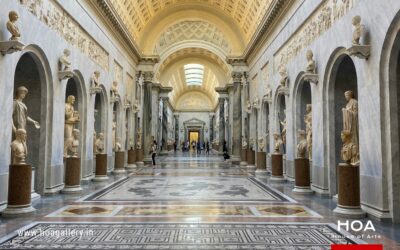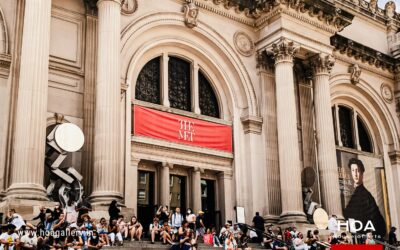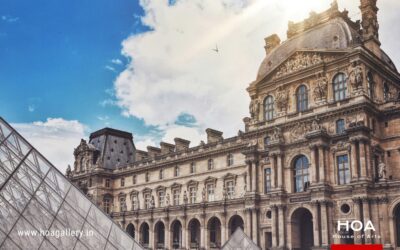The British Museum in London, UK, is one of the world’s greatest cultural institutions, dedicated to human history, art, and archaeology. Founded in 1753, it holds a collection of over 8 million artifacts, covering over two million years of human civilization. With its vast and diverse exhibits, the British Museum provides a fascinating journey through time, from the ancient world to modern societies.
History & Architecture
The British Museum was established by an Act of Parliament in 1753 and officially opened to the public in 1759. It was the first national public museum in the world, allowing free access to knowledge and culture.
Its neoclassical architecture, designed by Sir Robert Smirke, features a grand entrance with Greek-style columns, symbolizing the museum’s dedication to world heritage. One of the most iconic architectural elements inside the museum is the Great Court, a spectacular glass-roofed atrium designed by Norman Foster, which is the largest covered public square in Europe.
Collections & Masterpieces
The British Museum is divided into various departments, each showcasing artifacts from different cultures and time periods. Some of the most significant collections include:
1. Ancient Egyptian Collection
The British Museum has the largest and most comprehensive collection of Egyptian antiquities outside Egypt, including:
- The Rosetta Stone – A key artifact that helped scholars decipher Egyptian hieroglyphs.
- The Bust of Ramesses II – A colossal granite statue of one of Egypt’s greatest pharaohs.
- Mummies and Sarcophagi – Well-preserved remains of Egyptian rulers and priests.
2. Greek and Roman Antiquities
A vast collection of sculptures, pottery, and relics from Ancient Greece and Rome, including:
- The Elgin Marbles (Parthenon Sculptures) – Marble friezes taken from the Parthenon in Athens, depicting Greek mythology.
- The Portland Vase – A famous piece of Roman glasswork, dating back to the 1st century AD.
- Statue of Aphrodite (Venus of Knidos) – An elegant sculpture of the Greek goddess of love.
3. Middle Eastern Collection
Artifacts from Mesopotamia, Assyria, and Persia, including:
- The Assyrian Lion Hunt Reliefs – Stunning carvings depicting royal hunting scenes.
- The Cyrus Cylinder – Often considered the first human rights charter, from the Persian Empire.
- The Ishtar Gate Fragments – Remains of the grand entrance to Babylon, adorned with blue-glazed bricks.
4. Asian Art & Antiquities
A remarkable collection of objects from India, China, Japan, and Southeast Asia, including:
- The Amaravati Marbles – Buddhist sculptures from an ancient Indian stupa.
- The Admonitions Scroll – A famous Chinese painting from the Tang Dynasty.
- Japanese Samurai Armor – Intricate suits of armor used by feudal warriors.
5. African & Pre-Columbian Art
Notable artifacts from Africa and the Americas, including:
- The Benin Bronzes – Exquisite metal plaques from the Kingdom of Benin (modern-day Nigeria).
- Mayan Codices – Ancient books recording astronomical and religious knowledge.
- Easter Island Moai Statue – A massive stone figure from Polynesia.
6. British and European History
A diverse range of artifacts from medieval and modern Europe, including:
- The Sutton Hoo Treasure – A 7th-century Anglo-Saxon burial hoard, featuring a helmet and gold artifacts.
- The Lewis Chessmen – Intricately carved Viking-era chess pieces made from walrus ivory.
- The Magna Carta (facsimile) – A copy of the 1215 document that laid the foundation for constitutional law.

The Sistine Chapel Ceiling by Michelangelo
Visitor Experience
- Location: Great Russell Street, London WC1B 3DG, UK
- Annual Visitors: Over 6 million people
- Must-See Areas: The Egyptian Galleries, The Parthenon Sculptures, and the Middle Eastern Collection.
- Tip: Entry to the museum is free, but some special exhibitions may require tickets.
Conclusion:
The British Museum is a treasure trove of world history, offering an unparalleled insight into different cultures and civilizations. Whether you are fascinated by Egyptian mummies, Greek sculptures, Mesopotamian relics, or Indian art, the museum provides an enriching and thought-provoking experience. As one of the most comprehensive museums in the world, it continues to be a global center for learning, research, and cultural preservation.




